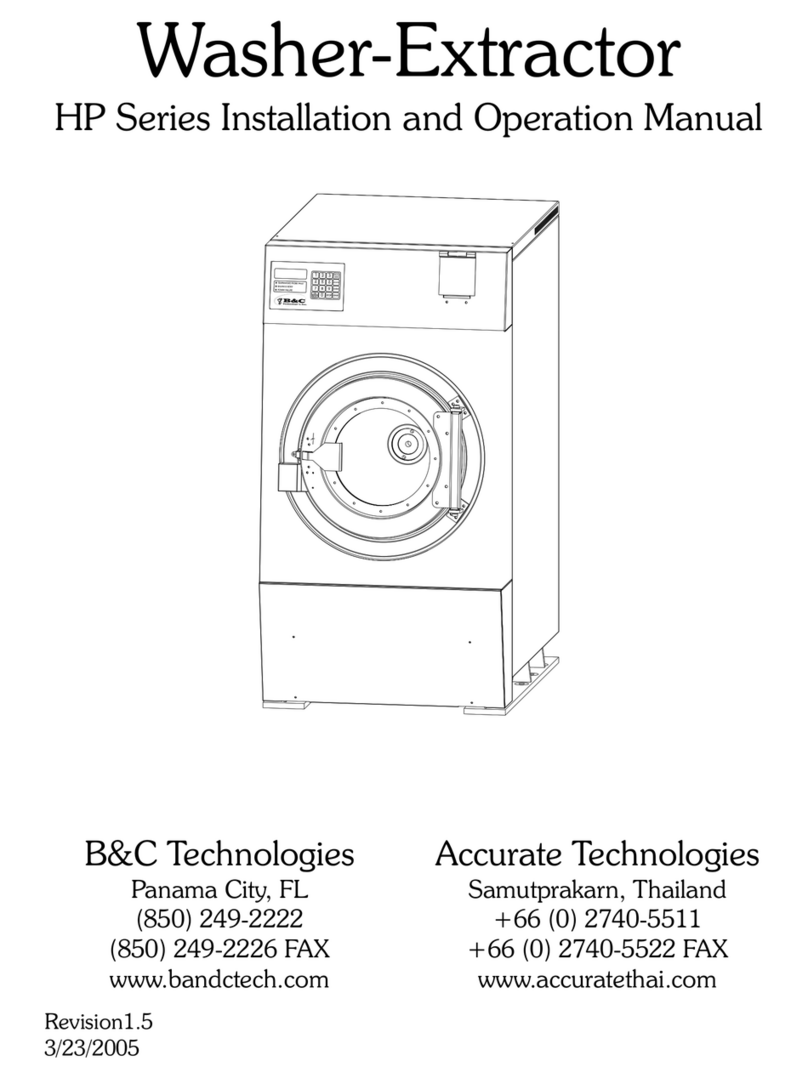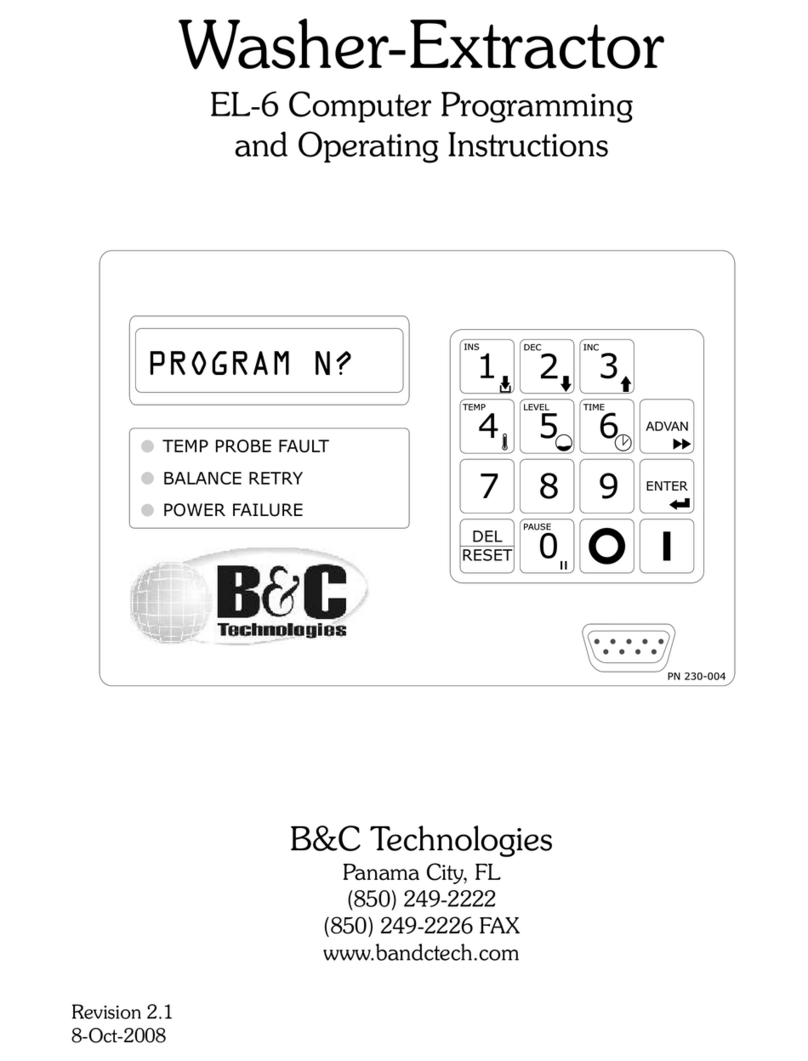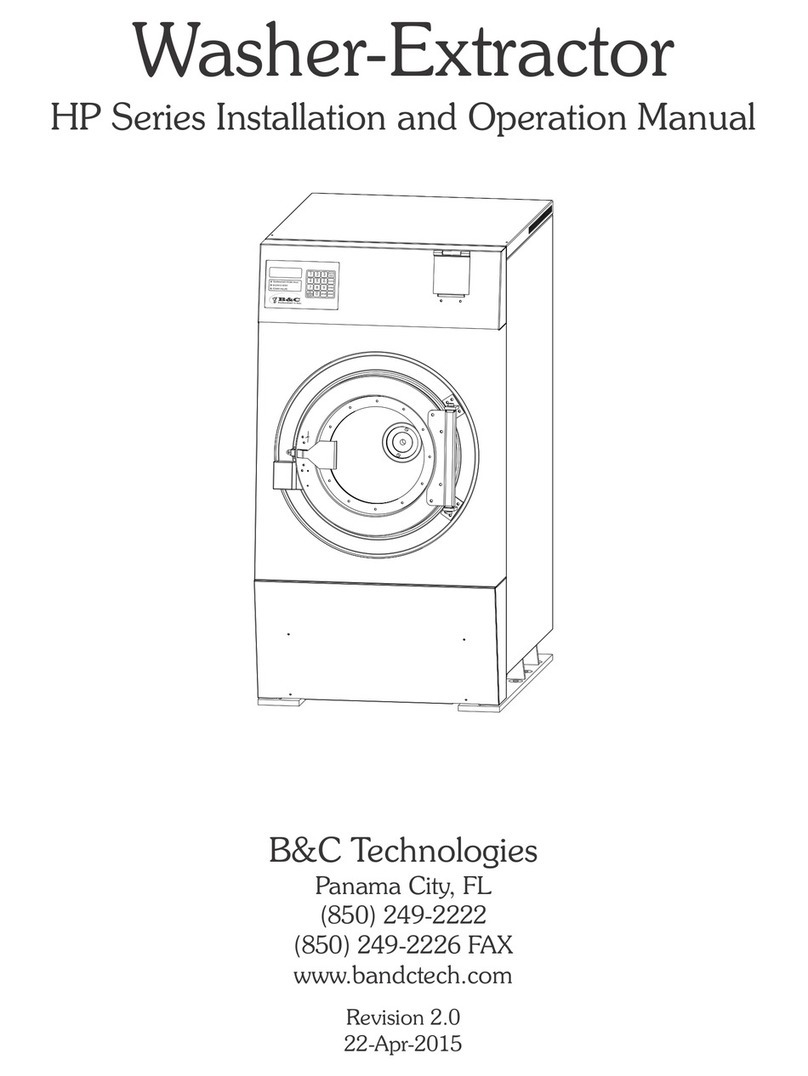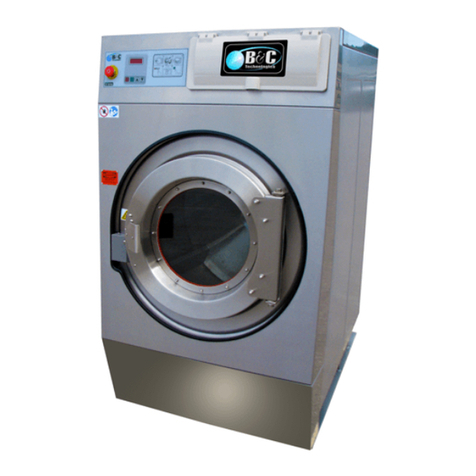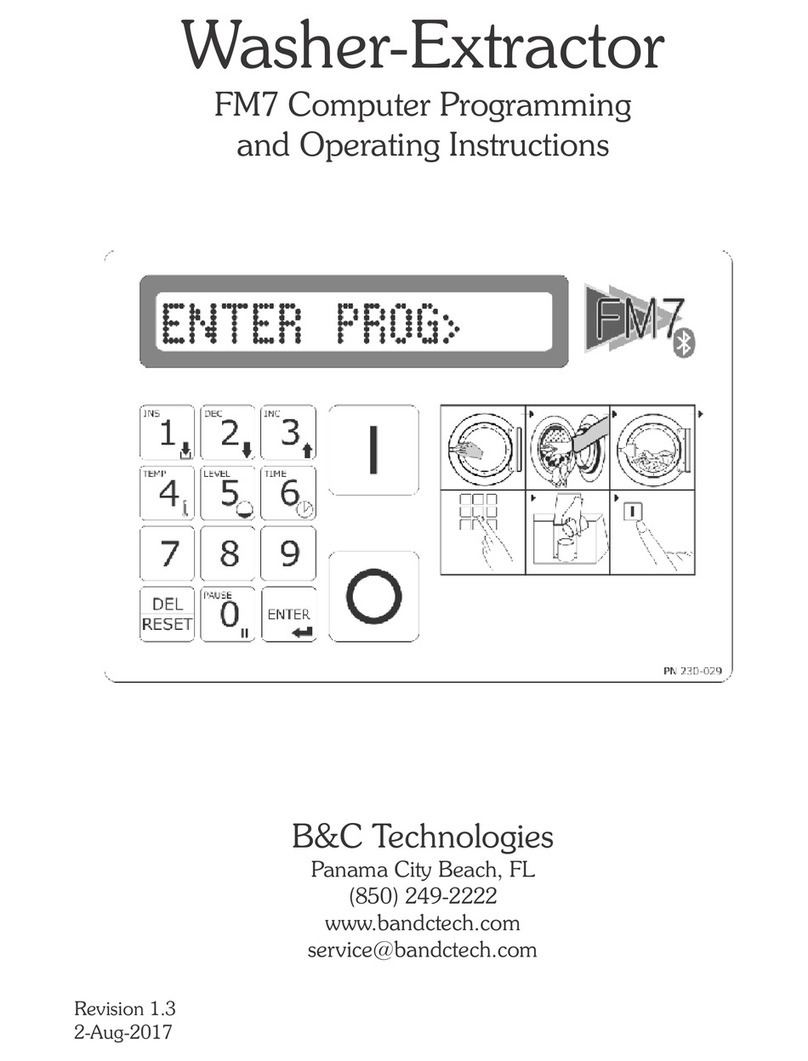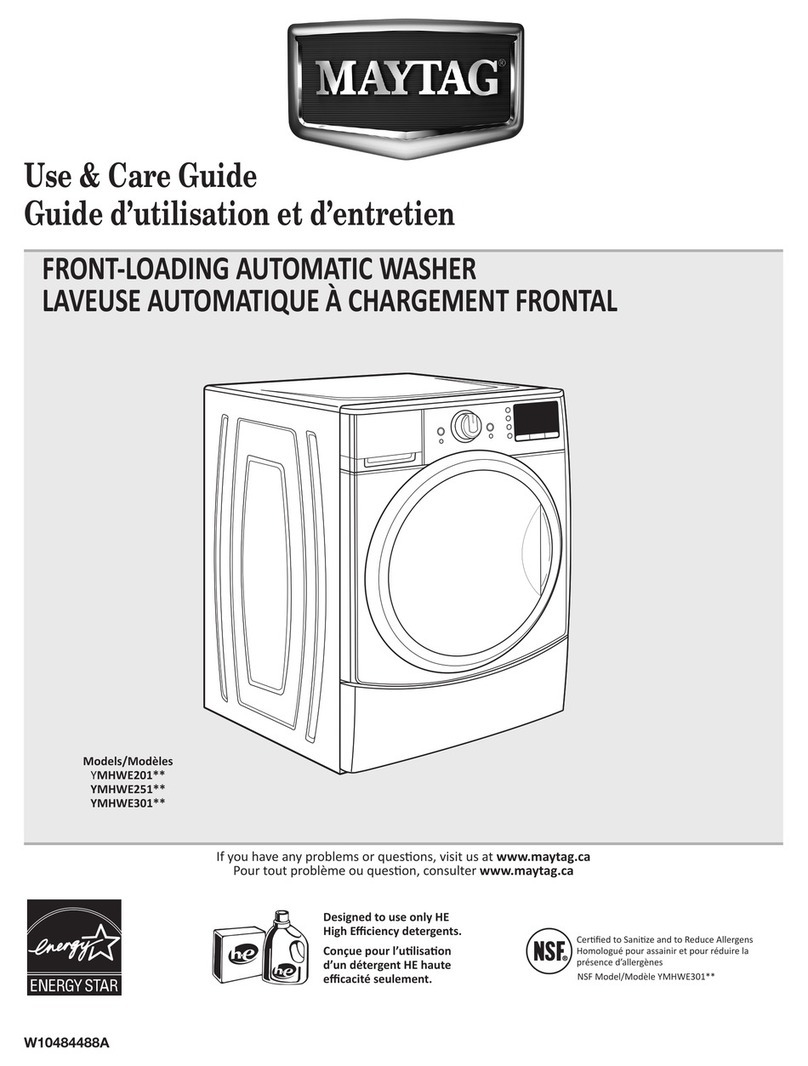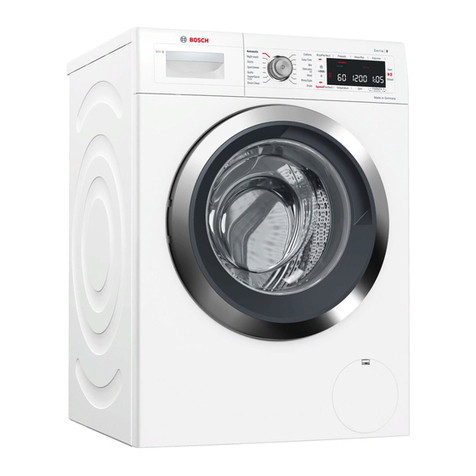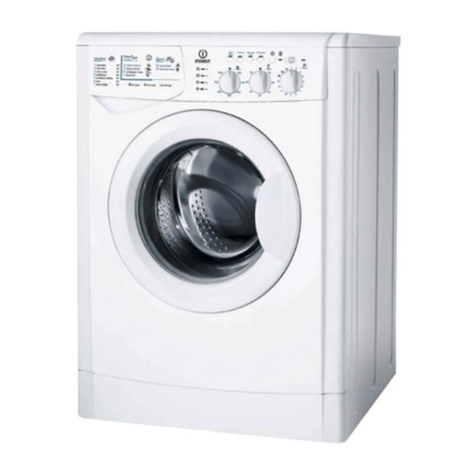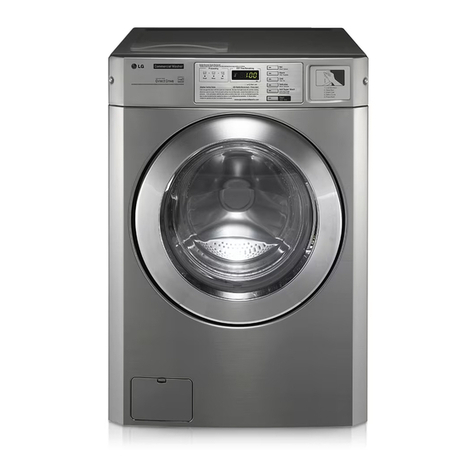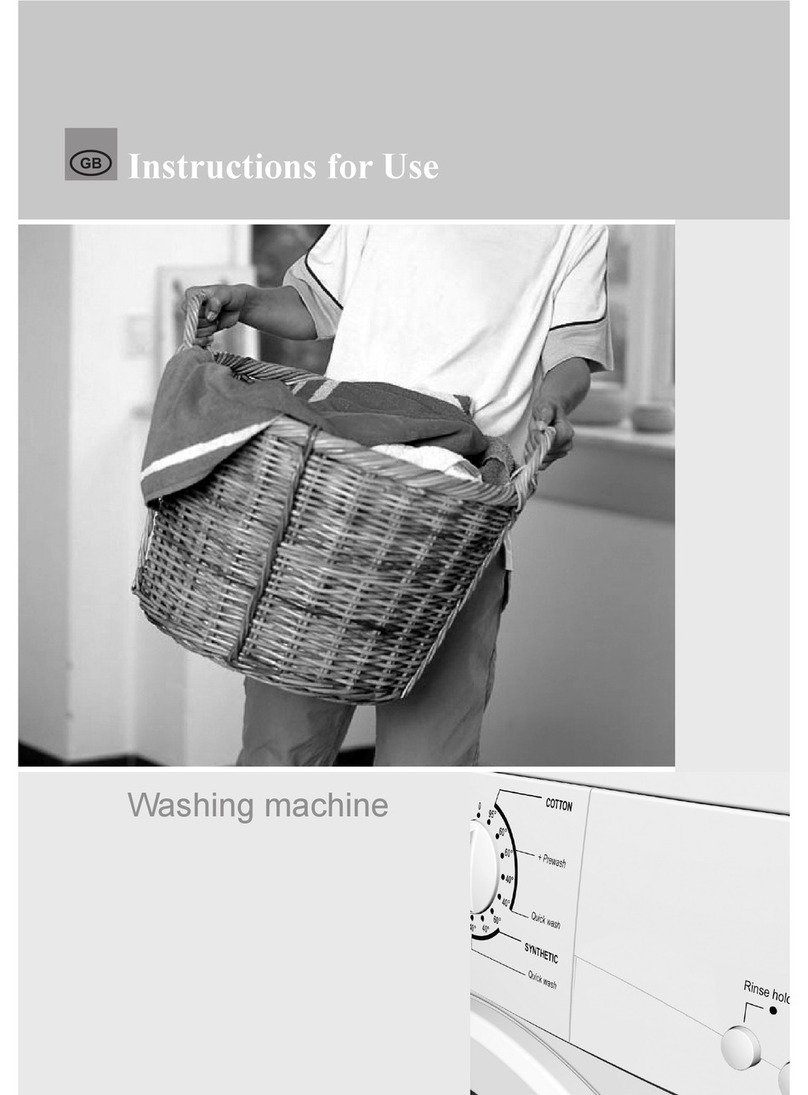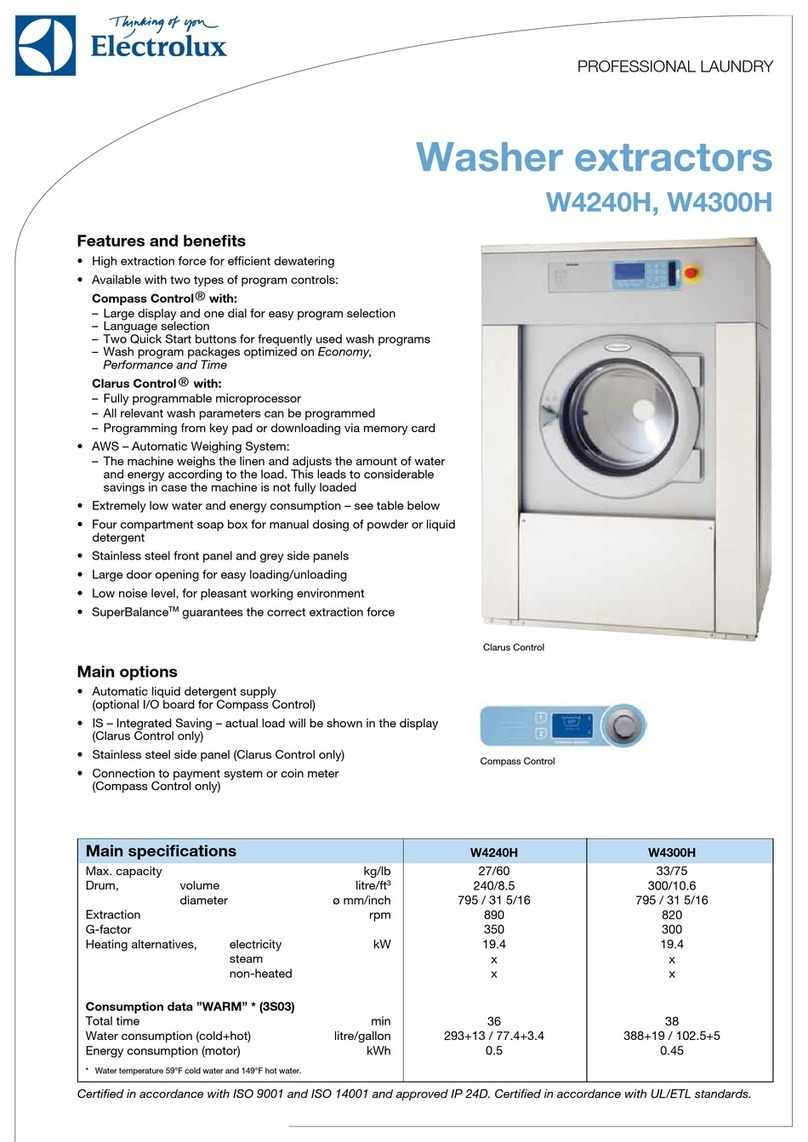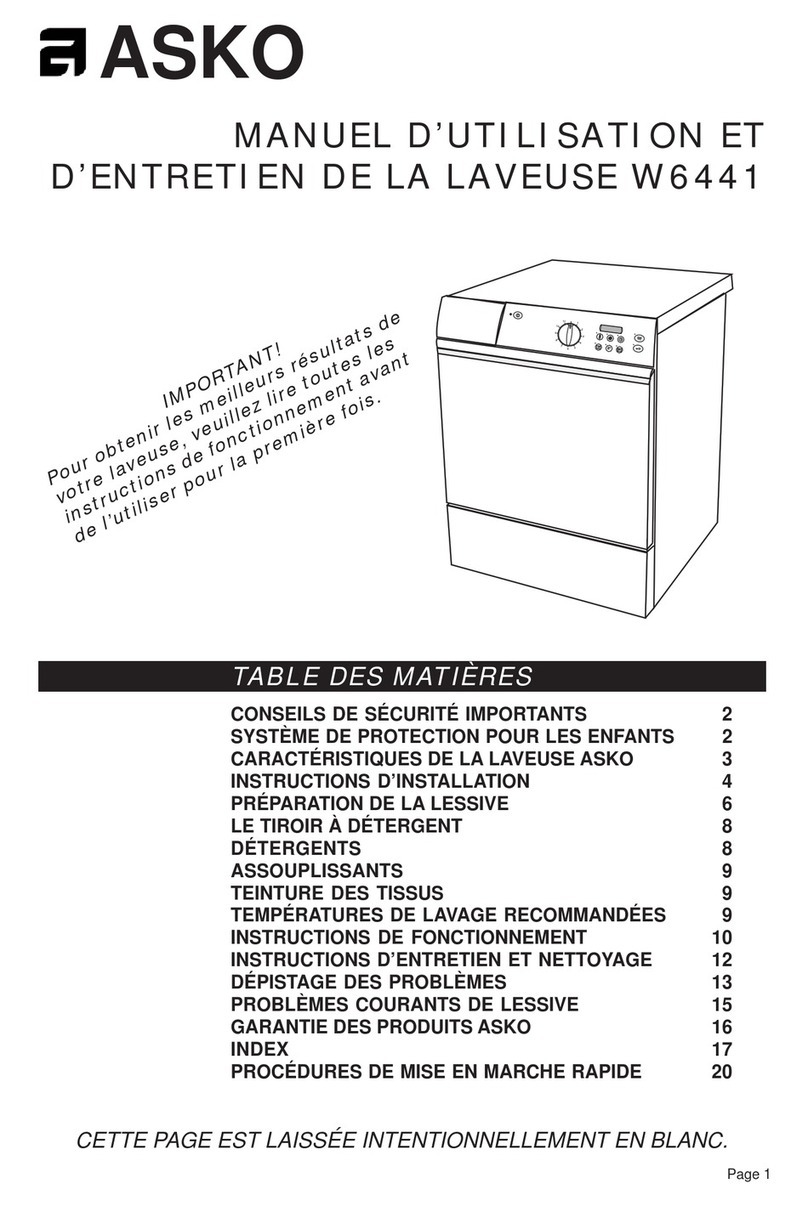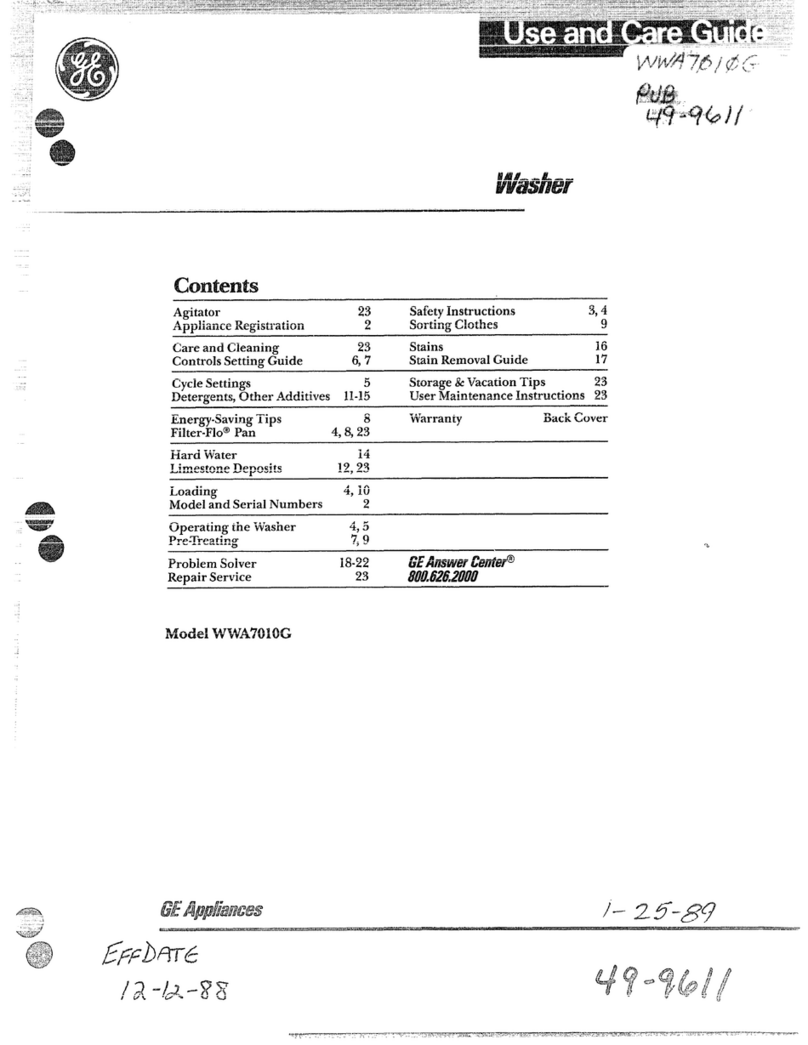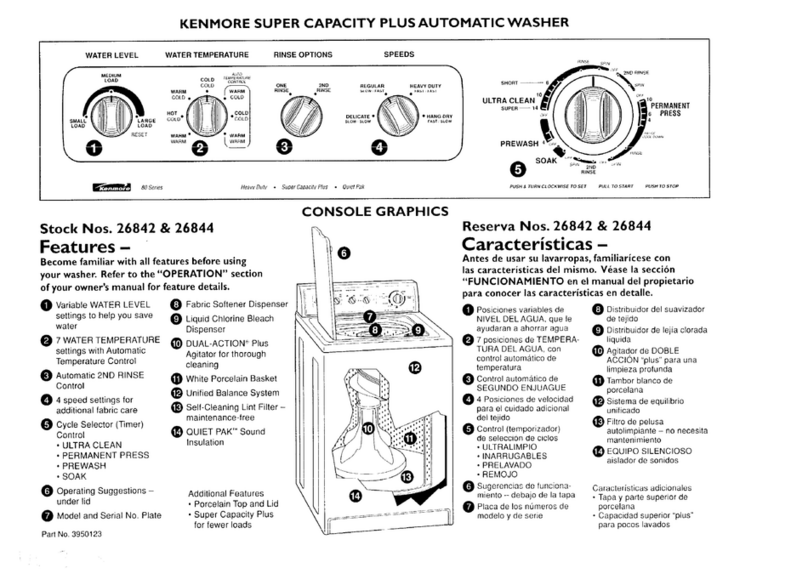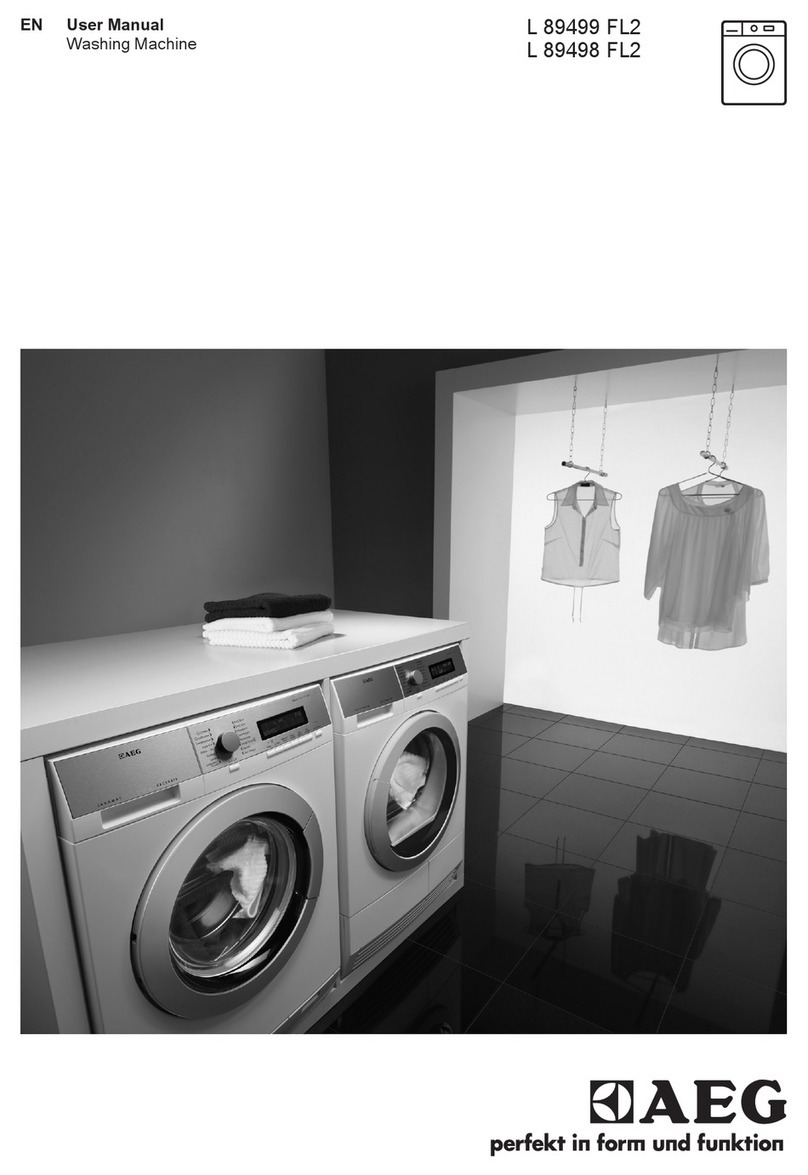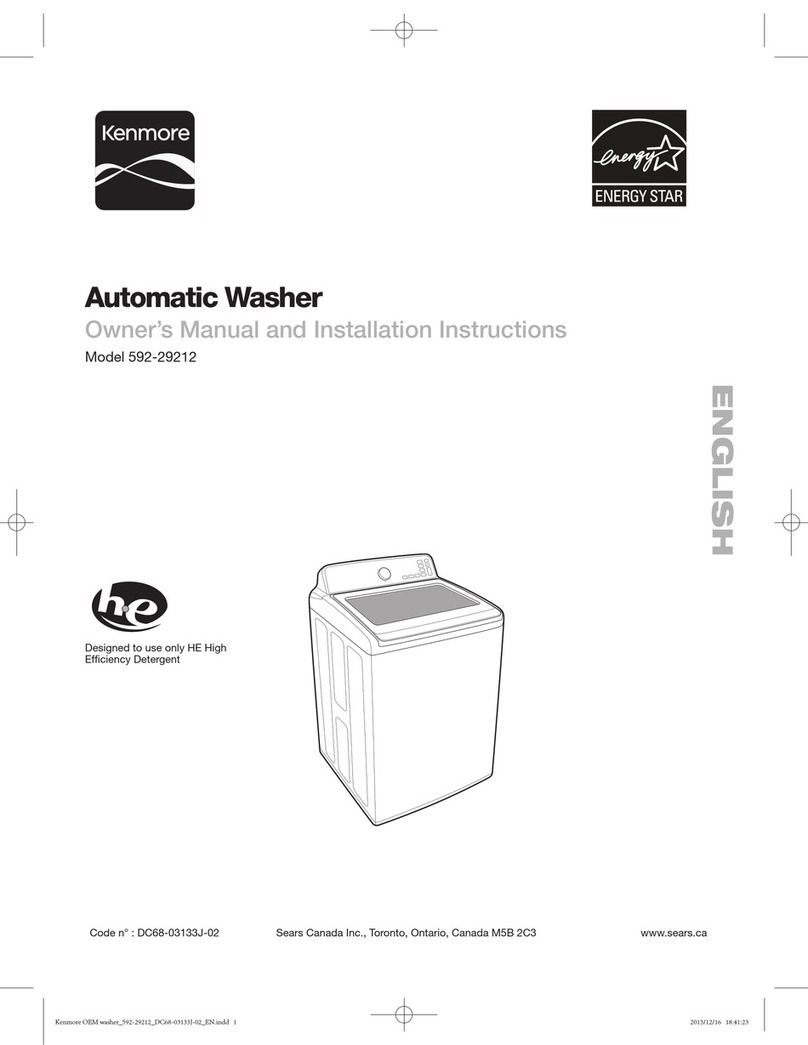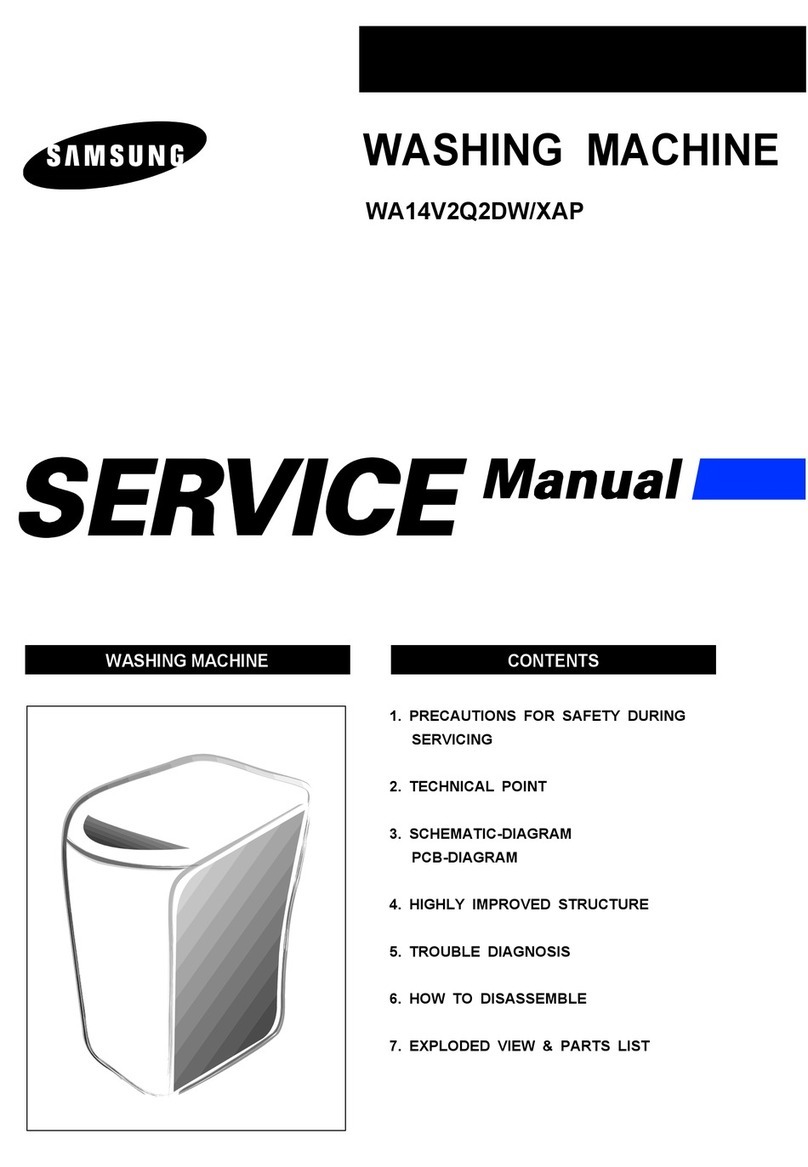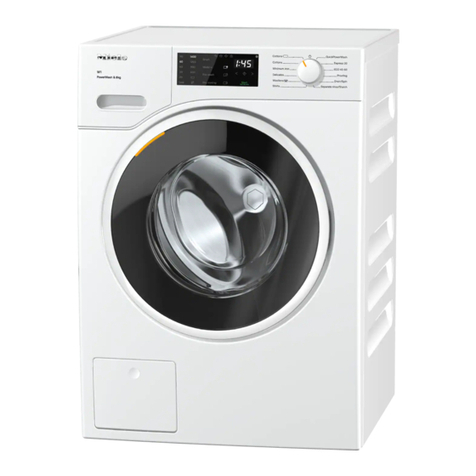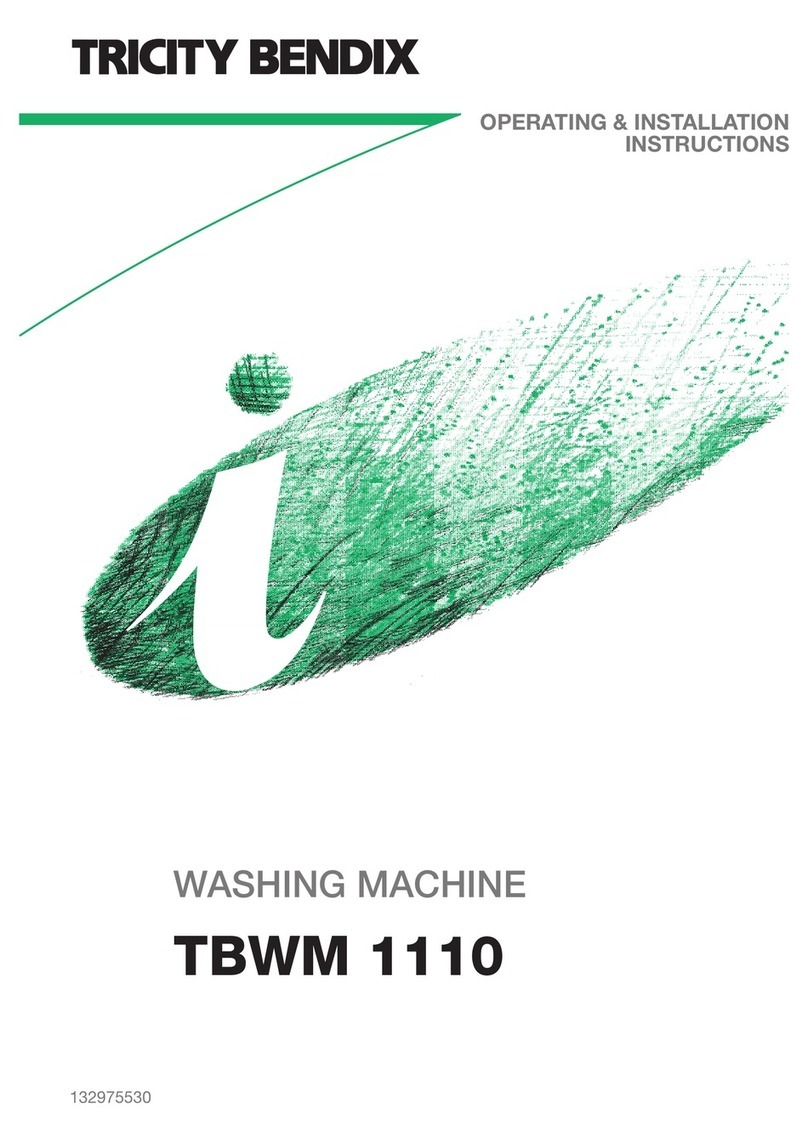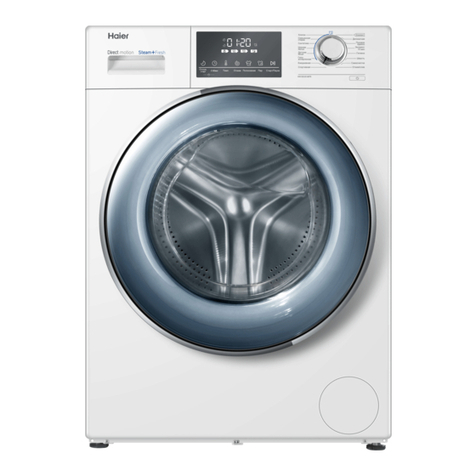B&C Technologies SI Series User manual

Washer-Extractor
SI Series Installation and Operation Manual
9-Sep-2013
Revision 2.20

Contents
1 Model Identification 1
2 Important Instructions 3
2.1 BeforeAttemptingRepairs.................................. 3
2.2 PartsOrderingInformation ................................. 4
2.2.1 NameplateLocation ................................. 4
2.3 KeySymbols.......................................... 5
2.4 SafetyInformation ...................................... 5
2.5 Installation and Operational Safety Instructions . . . . . . . . . . . . . . . . . . . . . 6
3 Introduction 7
3.1 CustomerService ....................................... 8
3.2 ReplacementParts ...................................... 8
3.3 TheoryofOperation ..................................... 8
4 General Specifications 10
5 Installation 12
5.1 ReceivingInspection ..................................... 12
5.2 SafetyChecklist ........................................ 12
5.2.1 OperatorSafety.................................... 13
5.2.2 Safe Operation Environment . . . . . . . . . . . . . . . . . . . . . . . . . . . . 14
5.2.3 Environmental Conditions . . . . . . . . . . . . . . . . . . . . . . . . . . . . . 14
5.2.4 MachineLocation................................... 15
5.2.5 Input and Output Services . . . . . . . . . . . . . . . . . . . . . . . . . . . . . . 15
i

5.2.6 InverterDrive..................................... 16
5.2.7 MachineryMisuse .................................. 16
5.3 DimensionalClearances ................................... 17
5.4 MachineFoundation ..................................... 17
5.4.1 Mounting Bolt Installation . . . . . . . . . . . . . . . . . . . . . . . . . . . . . . 18
5.5 TransportationBrackets ................................... 19
5.6 DrainInstallation ....................................... 19
5.7 ElectricalInstallation ..................................... 20
5.8 WaterConnection....................................... 22
5.9 SteamConnection....................................... 23
5.10CompressedAirConnection................................. 25
5.11ExternalChemicalSupplies ................................. 25
5.11.1 ChemicalConnection ................................ 26
5.11.2 Chemical Signal Connections . . . . . . . . . . . . . . . . . . . . . . . . . . . . 27
5.12 Optional Loading Chute Installation . . . . . . . . . . . . . . . . . . . . . . . . . . . . 27
5.12.1 Chute Up Switch Installation . . . . . . . . . . . . . . . . . . . . . . . . . . . . 28
5.13ControlFunctionTest..................................... 28
6 Operation 32
6.1 DoorLockOperation..................................... 32
6.1.1 Opening and Closing the Door . . . . . . . . . . . . . . . . . . . . . . . . . . . 32
6.1.2 Opening and Closing the Door with Hydraulic Assist Option . . . . . . . . . 32
6.1.3 PeriodicMaintenance ................................ 33
6.2 MachineLoading ....................................... 33
6.3 Machine Loading with Optional Loading Chute . . . . . . . . . . . . . . . . . . . . . 33
6.4 WashProgramExecution................................... 35
6.4.1 End Step Condition: Level . . . . . . . . . . . . . . . . . . . . . . . . . . . . . . 37
6.4.2 End Step Condition: Temperature . . . . . . . . . . . . . . . . . . . . . . . . . 37
6.4.3 End Step Condition: Time . . . . . . . . . . . . . . . . . . . . . . . . . . . . . . 37
6.4.4 SingleStepExecution ................................ 37
ii

6.4.5 PartialProgram.................................... 38
6.4.6 Displaying the Current Program and Step . . . . . . . . . . . . . . . . . . . . . 38
6.4.7 Soak .......................................... 38
6.4.8 Advance........................................ 38
6.4.9 HaltingaProgram .................................. 39
6.4.10 WaterLevelRefresh ................................. 39
6.4.11 Unbalance....................................... 39
6.4.12 PowerFailure..................................... 39
6.4.13 EndofProgram.................................... 39
6.4.14 MalfunctionAlarms ................................. 39
6.4.15 MaintenanceAlarm ................................. 41
7 Maintenance 42
7.1 Daily .............................................. 42
7.1.1 BeginningofDay................................... 42
7.1.2 EndofDay ...................................... 43
7.2 Weekly ............................................. 43
7.3 Monthly ............................................ 43
7.4 Quarterly............................................ 45
7.5 CareofStainlessSteel..................................... 48
8 Service & Parts 50
8.1 Service ............................................. 50
8.2 Parts .............................................. 50
9 Decommisioning 51
iii

Chapter 1
Model Identification
Information contained in this manual is for the following machines:
SI-110
SI-135
SI-200
SI-275
SI-300
Refer to the SI Product Family chart on page 2 for details about the configuration and build of
a particular machine. The Product Family Chart ”‘decodes”’ the model information as shown on
the serial decal.
1

Figure 1.1: SI Product Family
2

Chapter 2
Important Instructions
2.1 Before Attempting Repairs
Moving parts can cause serious injury or death. Before attempting repairs, follow proper shut-
down procedures and remove power before commencement of service.
Safety is of primary concern with any maintenance or repair operation. If you are in any way
unsure of how to proceed with a repair or adjustment, consult this manual, a qualified mainte-
nance technician, your local distributor, or the B&C Technologies Technical Service Department at
850-249-2222.
Only trained and experienced personnel should attempt maintenance or repair work on this equip-
ment. Follow all safety procedures including lock-out/tag-out procedures carefully. Ensure that
any loose fitting clothing or jewelry is tucked in or not worn to avoid being pulled into the ma-
chine. Remember, the machine has no brain - you must use your own.
Before attempting repairs, follow proper shutdown procedures and remove power before com-
mencement of service.
Never attempt to clean or service any area of the machine without removing power at the main
disconnect.
Read, follow, and obey these safety rules! The B&C Technologies Technical Service Department
3

is available to answer any questions you may have about the operation and servicing of your
machine. Please call with any questions or concerns about the operation of your machine.
2.2 Parts Ordering Information
If you require literature or spare parts, please contact your local distributor. If a local distributor
is unavailable, you may contact B&C Technologies directly at (850) 249-2222 for the name of your
nearest parts dealer.
For technical assistance in the United States, contact B&C Technologies:
(850) 249-2222 Phone
(850) 249-2226 FAX
www.bandctech.com
2.2.1 Nameplate Location
When contacting B&C Technologies about your equipment, please make note of the model and
serial number, located on the nameplate as shown in figure 2.1.
Figure 2.1: Serial Decal
4

2.3 Key Symbols
Anyone operating or servicing this machine must follow the safety rules in this manual. Partic-
ular attention must be paid to the DANGER, WARNING, and CAUTION blocks which appear
throughout the manual and shown in figures 2.2 on page 5.
Figure 2.2: Key Symbols
2.4 Safety Information
Installation Notice: For personal safety and for proper operation, the machine must be grounded
in accordance with state and local codes and in the USA in accordance with the National Electric
5

Code, article 250-96. Elsewhere, the equipment should be grounded in accordance with ANSI/NFPA
70, or the Canadian Electrical Code, CSA C22.1. The ground connection must be to a proven earth
ground, not to conduit or water pipes.
2.5 Installation and Operational Safety Instructions
1. Read all instructions prior to operating this equipment.
2. Ensure that the equipment is properly grounded before applying power and operation com-
mences.
3. Do not allow children to play in or around or operate this equipment.
4. Check the operation of all safety interlocks at the start of every shift. If the interlocks do not
stop the equipment immediately, the machine must be removed from service. Notify your
immediate supervisor, and do not operate the machine.
5. Never attempt to service the machine while it is running. Never reach over, under, around, or
behind any safety device, or into any area near moving parts or hot surfaces without shutting
off power and allowing the machine to adequately cool.
6. Read, understand, and follow all safety instructions. Do not come close to moving parts and
hot surfaces. Do not wear loose clothing, jewelry, neckties, or any other garment that could
be come caught in the machine while operating or near the machine.
7. Only a qualified technician should attempt to service or repair the machine.
8. Do not install the machine in an area where it could be exposed to water or weather.
9. Do not alter or tamper with the control system.
10. Keep the interior and exterior of the machine clean of lint, dirt, dust and debris.
11. Always disconnect the electrical service from the machine before performing service.
12. This machine must be installed according to the installation instructions. All utility connec-
tions must comply with state and local codes and must be made by a licensed installer where
required.
6

Chapter 3
Introduction
The SI line is the industrial freestanding washer-extractor series of machines from B&C Technolo-
gies. It is an open pocket washer-extractor with a large door opening for easy and quick loading
and unloading. It has been developed for the institutional and industrial market, and is suitable
for commercial laundries, hotel, food processing plants, factories and other places where laundry
might be processed.
The design allows for top performance at lowest possible operation cost and investment. The
flexible electronic control center ensures that maximum productivity is obtained.
The SI series utilizes high quality material, such as 304 (18/8) stainless steel in vital parts in contact
with the wash solution. It has a stainless steel cabinet for long life with easily removable panels.
The key advantages of this series are the simplicity of the microprocessor and the electronic AC
drive system, which utilizes only one motor. The system allows for washing and extraction at
any speed and mechanical action to suit any textile fiber used today and tomorrow. A built in
suspension system isolate objectionable vibrations and the high speed final extraction saves time
and energy in the finishing operation.
The main bearing is located outside the wash solution and will not be damaged, should the shell
seals leak. The machine is provided with three V-seals, which are very reliable and will last for
many years. The calculated life expectancy of the bearing is in excess of twenty years.
The five compartment, side mounted supply dispenser for powder and liquid detergents are stan-
dard and the machine is designed to accept the connection of 8 additional external chemical lines
and pumps. More chemical connections are available as an option.
The SI series can be provided with tilt devices that can tilt the machine one or both ways. This
option provides for easy loading and unloading and saves hard labor.
The SI series is also prepared to accept the connection of water reuse systems. The tanks can be
equipped with or without steam or electrical heat depending on installation and operation. The
water reuse system is programmable by the machines control.
7

3.1 Customer Service
For technical assistance:
In the United States
Phone: (850)-249-2222
FAX: (850) 249-2226
e-mail: [email protected]
Web: www.bandctech.com
3.2 Replacement Parts
In the event that literature or replacement parts are required, contact the local distributor of the
equipment, or contact B&C Technologies at the above phone numbers/internet addresses.
3.3 Theory of Operation
The B&C SI models use a single-speed motor to drive the cylinder via V-belts in all speeds. The
cylinder is supported by two spherical roller bearings located in split pillow block housings made
of cast steel.
The motor is controlled by the computer control located in the front and the AC inverter drive
located in the rear panel. Any speed can be programmed for any wash cycle. Some speed ranges
are blocked out for programming due to safety reasons. These speed ranges are ones that the
machine cannot operate at due to its spring or suspension resonance. This speed range is not
important and normal speeds for wash or extraction are not within this range. Any wash speed
in the range of 10-50 RPM and extraction speeds 150 to max RPM can be programmed. Further,
any reversing action can be programmed. Normal reversing action is 16 seconds forward, pause
for 4 seconds, and 16 seconds reverse. Any temperature between 70F to 200F (20-95C) can be
programmed. Any water level in the range of the machine parameters can be programmed in
centimeters. The computers will automatically provide safety levels for steam injections and door
operations.
Water entry into the machine is through electromagnetic water valves controlled by the computer.
The computer also controls the drain, supply dispenser, any external liquid supplies, steam injec-
tion and any other vital functions of the wash program. The control also records cycles and data
of importance that are used for maintenance purposes.
The steam, if installed is injected in the bottom of the shell via a steam injector. The steam is
controlled by a steam valve that is activated by the control.
The cylinder is perforated, allowing water to pass through and drain from within during drain
and extract steps. Lifting ribs inside the cylinder lift the load from the wash solution and allow
the load to tumble and falling back into the solution when the load reaches the approximate 10-11
oclock or 1-2 oclock positions. This mechanical action removes soil from the fabric. Furthermore,
8

the lifters are perforated on the top so that water can cascade over the goods and wet them quickly.
This reduces water consumption as water is picked up at the cylinders lowest point and lifted and
splashed over the goods at the highest point as the cylinder rotates.
A stainless steel door is provided for loading and unloading. A door lock system prevents oper-
ation of the machine when the door is open. The door is locked during operation utilizing an air
cylinder and a manual latch for safety reasons. The door lock is provided with magnetic sensor to
indicate that the machine is locked and provide for start of the machine when the door is closed
and locked.
The AC drive, brake unit, contactor, circuit overload protectors, input power supply connections,
external supply connections, and control transformer are behind a cover of the rear of the machine.
Pneumatic controls together with the air pressure regulator for the door seal are also located here.
9

Chapter 4
General Specifications
10

Figure 4.1: SI Series General Specifications
11

Chapter 5
Installation
5.1 Receiving Inspection
Upon receipt of the equipment, visually inspect for shipping damage and note any damage with
the carrier before signing the shipping receipt, or advise the carrier of the damage as soon as it is
noted.
If damage is discovered, a written claim must be filed with the carrier as soon as possible.
Note: Warranty is VOID unless the equipment is installed according to instructions. The installa-
tion must comply with the minimum requirements listed in this manual. All national, state and
local codes must be followed including but not limited to gas, electrical, plumbing and HVAC.
Due to various requirements, statutory codes should be well understood before installation com-
mences.
Important: The machine should be transported and handled in an upright position.
5.2 Safety Checklist
Before Initial start up of a B&C free-standing washer extractor perform the following safety check:
1. Make sure all electrical and plumbing connections have been made in accordance with ap-
plicable codes and regulations.
2. Make sure the machine is grounded electrically.
3. Make sure the machine has flexible water fill and drain connections of the correct size, length
and type, with no kinks, and that they are securely attached and/or clamped.
4. Make sure the transport brackets have been removed.
Before machine is placed in operation, the door safety interlock must be checked for proper oper-
ation as follows:
12

Before servicing any equipment, make certain it is disconnected from the electrical
power source. Never allow operation of the machine when any safety device is
malfunctioning. Never bypass safety devices.
Never insert hands or objects into basket until it has completely stopped. Doing
so could result in serious injury.
1. When the washer is energized electrically and in operation, the loading door must be locked
in the closed position. Verify this by attempting to open the loading door when the machine
is operating. If necessary, check the door safety interlock and sensors for proper operation.
Consult the service manual, or call a qualified service technician if necessary.
2. When the washers loading door is open, it should not be possible to start the machine. Verify
this by attempting to start the washer with the door open. Also, close the door without
locking it and verify that it is not possible to start the machine with the door not locked. If
necessary, check the door lock sensors for proper operation,. Consult the service manual, or
call a qualified service technician. If additional information is required, contact your local
distributor or call the manufacturer of the machine.
•To provide personal safety and keep the machine in proper working order, follow all main-
tenance and safety procedures presented in this manual. If questions regarding safety arise.
Contact the factory immediately.
•Use factory authorized spare parts to avoid safety hazards.
5.2.1 Operator Safety
To ensure the safety of machine operators the following maintenance checks must be performed
daily.
1. Prior to operating the machine, verify that all warning signs are present and legible. Missing
or illegible signs must be replaced immediately. Make certain that spares are available.
2. Check door interlock before starting operation of the machine, see safety check list.
3. Do not attempt to operate the machine if any of the following conditions are present:
(a) The door does not remain securely locked during the entire cycle.
(b) Excessively high water level is evident.
(c) Machine is not connected to a properly grounded circuit.
Do not bypass any safety devices in the machine.
13

Never operate the machine with a bypassed or disconnected out-of-balance
switch. Operating the machine with severe out-of-balance loads could result
in personal injury and serious equipment damage.
Do not place volatile or flammable fluids in any machine. Do not clean the ma-
chine with volatile or flammable fluids such as acetone, lacquer thinners, enamel
reducers, carbon tetrachloride, gasoline, benzene, naphtha, etc. Doing so could
result in serious personal injury and/or damage to the machine.
5.2.2 Safe Operation Environment
Safe operation requires an appropriate operating environment for both the operator and the ma-
chine. If questions regarding safety arise, contact the factory.
5.2.3 Environmental Conditions
1. Ambient temperature. Water in the machine will freeze at temperatures of 32F (0C) or below.
Temperatures above 120 F (50C) will result in more frequent motor overheating and, in some
cases, malfunction or premature damage to solid state devices that are used in the machines.
Special cooling devices may be necessary.
2. Humidity. Relative humidity above 90% may cause the machines electronics or motors to
malfunction or may trip the ground fault interrupter. Corrosion problems may occur on
some metal components. If the relative humidity is below 30% belts and rubber hoses may
eventually develop dry rot. This condition can result in hose leaks, which may cause hazards
external to the machine in conjunction with adjacent electrical equipment.
3. Ventilation. The need for make-up air openings for such laundry room accessories as dry-
ers , ironers, water heaters, etc. must be evaluated periodically. Louvers, screens, or other
separating devices may reduce the available air opening significantly.
4. Radio Frequency Emissions. A filter is available for machines in installations where floor
space is shared with equipment sensitive to radio frequency emissions. All machines that are
shipped to CE countries are equipped with this filter and comply with the EMI regulations.
5. Elevation. If the machine is to be operated at elevations over 3280 feet (1000 meters) above sea
level, pay special attention to water levels and electronic settings ( particularly temperature)
or desired result may not be achieved.
6. Chemicals. Keep stainless steel surfaces free of chemical residues to avoid corrosion.
7. Water damage. Do not spray the machine with water. Short circuiting and serious damage
may result. Repair immediately all seepage due to faulty gaskets, etc.
14

Replace all panels that are removed to perform service and maintenance pro-
cedures. Do not operate the machine with missing guards or with broken or
missing parts. Do not bypass any safety devices.
5.2.4 Machine Location
1. Foundation. The concrete floor must be of sufficient strength and thickness to handle the
floor loads generated by the machine at high extract speeds.
2. Service/ Maintenance Space. Provide sufficient space to allow comfortable performance of
service procedures and routine maintenance. This is especially important in connection with
machines equipped with AC inverter drives. Consult installation instructions for specific
details.
5.2.5 Input and Output Services
1. Water pressure. Best performance will be realized if water is provided at a pressure of 30-85
psi (2.0-5.7 bar). Although the machine will function properly at lower pressure, increased
fill time will occur. Water pressure higher than 120 psi (8.0 bar) may result in damage to
machine plumbing. components failure (s) and personal injuries.
2. Air Pressure. Best performance will be realized if air is provided at a pressure of 80-100psi
(5.4-6.7 bar). SI series machines will experience door seal and drain failure if compressed
air service is interrupted. Regulators for the door seal and optional tilting should be set to a
maximum of 15 PSI (1 bar) and 60 PSI (4 bar) respectively.
3. Optional Steam heating pressure. Best performance will be realized if steam pressure is
provided at a pressure of 30-80 psi (2.0-5.4 bar). Steam pressure higher than 125 psi (8.5 bar)
may result in damage to steam components and may cause personal injuries. For machines
equipped with optional steam heat, install piping in accordance with approved commercial
steam practices. Failure to install a steam filter may void the warranty.
4. Drainage System. Provide drain lines or troughs large enough to accommodate the total
quantity of water that could be dumped if all machines on the site drained at the same time
from the highest attainable level. If drain troughs are used, they should be covered to support
light foot traffic
5. Power. For personal safety and for proper operation, the machine must be grounded in accor-
dance with state and local codes. The ground connection must be to a proven earth ground,
not to conduits or water pipes. An easy-access disconnect switch should be provided.
Ensure that a ground wire from a proven earth ground is connected to the ground lug in the elec-
trical junction box on this machine. Without proper grounding personal injury from electrical
shock could occur and machine malfunctions may be evident. Computer-controlled machines
must have a proper ground to prevent computer malfunctions.
15

Always disconnect power and water supplies before a service technician performs
any service procedure. Where applicable, steam and/or compressed air supplies
should also be disconnected before service is performed.
5.2.6 Inverter Drive
Machines equipped with AC drives require special attention with regard to the operating envi-
ronment.
1. An especially dusty or linty environment will require more frequent cleaning of the AC drive
cooling fan filter and of the AC drive itself.
2. Power line fluctuations from sources such as an uninterruptible power supplies (UPS) can
adversely affect machines equipped with the AC drive. Proper suppression devices should
be utilized on the incoming power to the machine to avoid problems.
3. A clean power supply free from voltage spikes and surges is absolutely essential for ma-
chines equipped with the AC drive. Nonlinear inconsistencies (peaks and valleys) in the
power can cause the AC drive to generate nuisance errors. If voltage is above 230V for
200 V installations or above 460V for 400V installations, a buck/boost transformer is recom-
mended. If voltage is above 240V or 480V, a buck/boost transformer is required unless the
factory advises differently.
4. Sufficient space to perform service procedures and routine preventive maintenance is espe-
cially important for machines equipped with AC drives.
5.2.7 Machinery Misuse
Even though this machine is an atmospheric vessel, never use it for any purpose other than
washing fabrics.
1. Never wash petroleum-soaked rags in the machine. This could result in an explosion.
2. Never wash machine parts or automotive parts in the machine. This could result in serious
damage to the wash cylinder.
3. Never stone wash in the machine. It could wear the wash cylinder and serious damage might
occur to the machine.
4. Never use the machine for dyeing nor with harsh chemicals that can cause corrosion and
other health hazards.
5. Never allow children to play on or around this machine. Death or serious injury can result
if children become trapped in the machine. Do not leave children unattended while the
machine door is open. These cautions apply to animals as well.
16
This manual suits for next models
6
Table of contents
Other B&C Technologies Washer manuals
